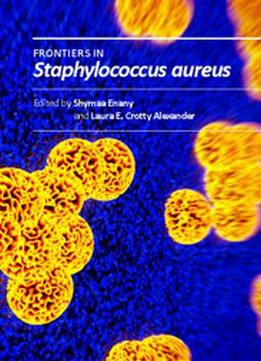
Frontiers In Staphylococcus Aureus Ed. By Shymaa Enany And Laura E. Crotty Alexander
by Shymaa Enany /
2017 / English / PDF
30.1 MB Download
In this volume experts examine in-depth patterns of S. aureus colonization and exposures in humans, mammals, and birds that have led to the development of various clinical diseases.
Staphylococcus was first recognized as a human pathogen in 1880 and was named for its grape cluster-like appearance. In 1884, Staphylococcus aureus was identified and named for its vibrant golden color, which was later found to be the result of golden toxin production.
The mode of transmission of S. aureus and different methods for its detection in different samples are defined. Conventional antibiotic options to treat this aggressive, multifaceted, and readily adaptable pathogen are becoming limited. Alternative, novel chemotherapeutics to target S. aureus are discussed in the pages within, including herbal medicines, bee products, and modes of delivery.
1 Staphylococcus aureus: Overview of Bacteriology, Clinical Diseases, Epidemiology, Antibiotic Resistance and Therapeutic Approach
2 Role of Nasal Staphylococcus aureus Carriage in Transmission Among Contact Athletes
3 Methicillin-Resistant Staphylococcus aureus (MRSA) in Food- Producing and Companion Animals and Food Products
4 Effects of Electronic (e)-Cigarette Vapor on Staphylococcal Virulence: Are E-Cigarettes Safer than Conventional Cigarettes?
5 Staphylococcus aureus Bacteremia in Adults
6 Determination of Staphylococcal Phenol-Soluble Modulins (PSMs) by a High-Resolution HPLC-QTOF System
7 PCR Assay for Detection of Staphylococcus aureus in Fresh Lettuce (Lactuca sativa)
8 Prevention of Staphylococcus aureus Contamination on Animal Products Using Indonesian Natural Products
9 Bacteriophage Therapy: An Alternative for the Treatment of Staphylococcus aureus Infections in Animals and Animal Models
10 Bee Products and Essential Oils as Alternative Agents for Treatment of Infections Caused by S. aureus











